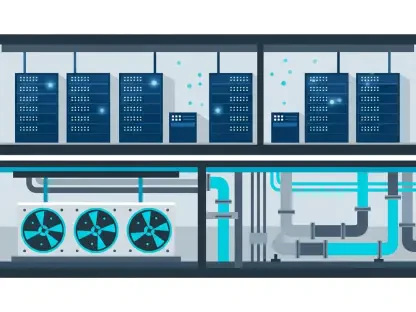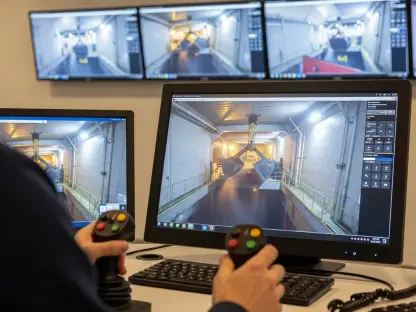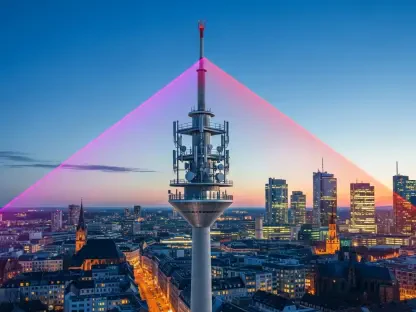What if the key to unlocking artificial intelligence’s full potential lies not just in raw computing power, but in harmonizing it with the planet’s well-being? In Narvik, Norway, a groundbreaking project is turning this vision into reality. Stargate Norway, OpenAI’s first European AI data center, stands as a beacon of possibility, powered entirely by renewable energy in a region rich with hydropower. This isn’t merely a technological leap; it’s a bold reimagining of how AI can grow without sacrificing environmental integrity. Let’s explore the story behind this pioneering initiative and its potential to reshape the global tech landscape.
A Bold Leap into AI’s Sustainable Frontier
Nestled in the heart of Norway’s hydropower-rich north, Stargate Norway emerges as a symbol of innovation with purpose. Launched by OpenAI as part of its global mission to expand AI infrastructure, this data center in Narvik isn’t just about pushing computational boundaries—it’s about doing so responsibly. The facility’s reliance on clean, renewable energy sets it apart from traditional data centers, many of which contribute heavily to carbon emissions. This project challenges the industry to rethink its priorities, placing sustainability at the core of technological progress.
The significance of this endeavor cannot be overstated. With AI’s influence expanding across sectors like healthcare, finance, and defense, the energy demands to support such systems have surged. Stargate Norway offers a glimpse of a future where these demands don’t come at the expense of the environment. By aligning cutting-edge technology with green principles, it positions itself as a potential blueprint for others to follow, sparking curiosity about whether this model can truly scale on a global stage.
Why Sustainable AI Is a Critical Priority
The rapid rise of AI has brought with it an inconvenient truth: the technology’s energy consumption is staggering. Data centers worldwide account for roughly 1-2% of global electricity use, a figure projected to grow as AI applications multiply. This creates a pressing dilemma for governments and corporations striving to meet climate targets while embracing digital transformation. Stargate Norway steps into this gap, addressing the urgent need for eco-friendly solutions that don’t compromise on performance.
Beyond environmental concerns, there’s a broader societal stake in sustainable AI. As communities grapple with the impacts of climate change, the tech industry faces increasing scrutiny over its role in exacerbating the problem. Projects like the one in Narvik highlight a path forward, proving that innovation and responsibility can coexist. This balance is vital not only for reducing carbon footprints but also for building public trust in AI as a force for good.
Inside Stargate Norway: Engineering a Green Tech Marvel
At the heart of Stargate Norway lies a commitment to renewable energy, with an initial capacity of 230MW drawn entirely from local hydropower, and plans to expand to 520MW in the coming years. This isn’t just about clean power; it’s about leveraging Norway’s natural resources to create a data center that minimizes ecological harm. The facility’s design incorporates advanced cooling systems to boost efficiency, ensuring that energy isn’t wasted even in the frigid northern climate.
Another standout feature is its focus on circular resource use. Excess heat generated by the data center is redistributed to nearby low-carbon businesses, supporting local sustainability efforts. Additionally, with a goal to deploy 100,000 Nvidia GPUs by 2027, the project—developed through a partnership between Nscale and industrial giant Aker—demonstrates ambition on a massive scale. This infrastructure promises to transform Europe’s AI capabilities while adhering to green standards.
Equally compelling is the project’s dedication to regional impact. Norwegian startups and researchers are given priority access to its computing resources, fostering local innovation. Meanwhile, capacity is also allocated to serve enterprises and governments across the UK and Northern Europe, ensuring a wide-reaching influence. This dual focus on community upliftment and broader connectivity underscores a new ethos for tech development.
Expert Perspectives on a Game-Changing Initiative
Industry leaders have hailed Stargate Norway as a landmark in AI infrastructure. OpenAI has described it as “one of the most ambitious investments in Europe,” a view shared by Nscale executives who point to the strategic advantage of low-cost, renewable energy. This unique positioning, they argue, could make the facility a benchmark for future data centers worldwide, setting a standard that prioritizes both performance and planet.
Global partnerships further amplify confidence in the project’s potential. Collaborations with heavyweights like SoftBank and Oracle bring expertise in AI model development and infrastructure scaling, ensuring that Stargate Norway isn’t just a local success but a globally relevant one. A tech analyst from Oslo recently noted, “This isn’t just about hardware; it’s about creating an ecosystem where sustainable AI can thrive.” Such insights reflect the widespread optimism surrounding the initiative.
On the ground, the Norwegian tech community buzzes with excitement. A startup founder in Narvik shared, “Having access to this level of compute power right here changes everything for us—it’s like getting a seat at the global table.” These voices, from corporate boardrooms to local innovators, paint a vivid picture of a project that inspires at every level, blending technical prowess with tangible human impact.
Lessons from Narvik: Scaling Sustainable AI Globally
Stargate Norway provides a practical framework for integrating AI growth with environmental stewardship, offering lessons for tech leaders and policymakers alike. One clear takeaway is the importance of location—choosing sites with abundant renewable resources like hydropower or wind can drastically cut carbon footprints. This approach could inspire similar projects in regions with untapped green energy potential.
Another key strategy is embedding community benefits into tech initiatives. By reserving resources for local startups and researchers, the Narvik project ensures that innovation serves as a catalyst for regional growth. Additionally, adopting practices like heat redistribution maximizes efficiency, turning waste into value. Partnerships with industry giants also prove critical, combining financial backing and technical know-how to tackle large-scale challenges. Together, these principles form a replicable model for sustainable AI expansion across diverse geographies.
Reflecting on Stargate Norway’s journey, it becomes clear that the fusion of technology and sustainability is not just an ideal but a necessity. The project carves a path that others can follow, demonstrating how AI can advance without draining the planet’s resources. Looking ahead, the challenge shifts to policymakers and industry pioneers to adopt similar frameworks, ensuring that future data centers prioritize green energy. The next step is to advocate for global collaboration, sharing knowledge and resources to build a network of sustainable AI hubs. This legacy of innovation with purpose offers hope that technology can indeed serve humanity’s progress while safeguarding the environment for generations to come.









